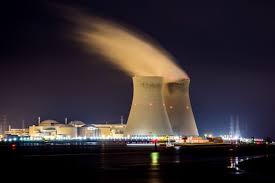Kenya’s plan to build its first nuclear power plant has taken a new direction as the government shifts focus from Kilifi County to Siaya County, following strong opposition from residents in the coastal region. The new preferred site for the multibillion-shilling energy project is now Lwanda Kotieno, located in Rarieda sub-county of Siaya State, Western Kenya.
This development comes after a high-level stakeholders’ meeting held in Bondo, Siaya County, where local leaders, including lawmakers and officials from the county government, gave their support for the nuclear project. The meeting, attended by members of parliament, energy officials, and representatives from the Nuclear Power and Energy Agency (NuPEA), was aimed at re-engaging communities after earlier setbacks in Kilifi.
The Siaya endorsement marks a major turnaround for the country’s nuclear energy ambitions. Unlike Kilifi, where community members raised several concerns, Siaya leaders see the project as a potential boost for regional development, promising job creation, infrastructure growth, and academic collaboration with institutions like Jaramogi Oginga Odinga University of Science and Technology.
The proposed plant is expected to begin development in 2027, with commissioning targeted for 2034. Kenya is currently in Phase 2 of the International Atomic Energy Agency (IAEA) milestones approach for new nuclear power programmes. The country has completed several steps in feasibility studies, development of legal and regulatory frameworks, and building human capacity in the energy sector.
The new location near Lake Victoria is expected to offer technical advantages, especially in terms of water availability needed for reactor cooling systems. Experts have identified the lake as a suitable and sustainable source of water to support the power plant’s operations once completed.
Back in Kilifi, the project had faced heavy criticism from local residents, environmental activists, and civil society groups. In October 2024, protesters took to the streets to oppose the government’s plan to build a nuclear plant in their community. They raised fears about potential radiation exposure, water pollution, and environmental degradation, especially around sensitive ecosystems like the Arabuko Sokoke Forest and the Watamu Marine Park.
Residents also complained about the lack of transparency and limited access to environmental impact assessments and technical documentation. According to several activists, the public was not properly informed or consulted about the selection of Kilifi as a site. Many saw the process as rushed and top-down, raising questions about the legitimacy of the decision.
The protests eventually forced the government and NuPEA to step back and reassess their strategy. With mounting opposition and no social license to operate, officials quietly redirected their stakeholder engagement to Siaya, where local leaders appeared more receptive.
Despite the fresh support in Siaya, the nuclear project still faces significant hurdles. Concerns remain over the safety of nuclear technology, disposal of radioactive waste, and the long-term financial commitment required to maintain such a complex facility. Some experts argue that the cost of building and maintaining a nuclear plant may place pressure on Kenya’s public finances if not properly managed.
The government, however, has maintained that nuclear energy is a vital part of its long-term energy mix. With rising demand for electricity and the need to reduce dependence on fossil fuels, officials say nuclear power offers a clean, stable, and large-scale energy solution. The project is also expected to help the country meet its climate change goals by reducing carbon emissions.
Dr. Justus Wabuyabo, Chief Executive Officer of NuPEA, said the agency remains committed to transparency and community engagement. He assured that safety remains a top priority and that all nuclear development will follow international best practices as laid out by the IAEA. He also added that community members in Siaya would be actively involved in consultations and benefit-sharing arrangements.
While the pivot to Siaya has revived momentum, it is clear that Kenya’s nuclear journey will continue to be closely watched by both supporters and critics. The country must now work to build public trust, manage environmental risks, and ensure that nuclear energy contributes positively to national development.
